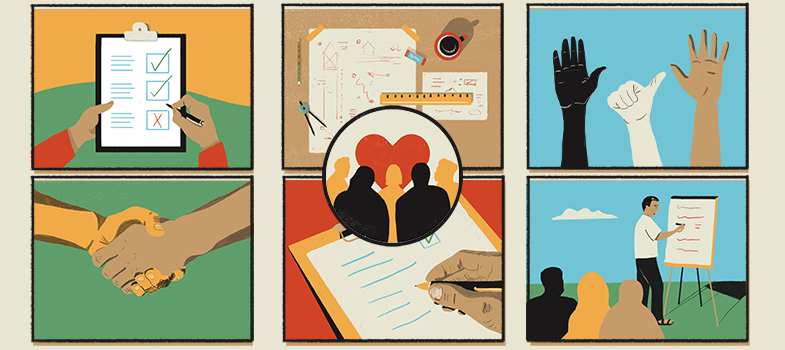Community Owned Solutions
1. Introducing Community Viability
Viability means to survive, to be healthy and to prosper. However, for a community this is not easy. Sometimes the situation is stable, sometimes conditions vary from the normal, and sometimes things change forever. A community therefore has to continually react and adapt to its environment. This environment might be the physical situation such as the weather, plants or animals. However, the environment also includes economic, cultural, political, legal, and social factors. Communities need to develop strategies to cope with all these different aspects of the wider environment and they need to be careful to ensure that all their survival strategies are at hand to deal with an increasing number of different challenges.
The community viability map shown in the next video was created using information collected from Indigenous communities across the Guiana Shield of South America. These communities live in remote forest, wetland and savanna areas, often rely on subsistence farming in the forests, hunting and fishing for food and have different cultural and language heritages.
For each category of community viability in the list below, Indigenous communities identified different survival strategies that were important to them. Some of these may be relevant to more than one category, but the aim of the diagram is to show that there are many different survival strategies a community possesses. It also helps to show the tensions within communities. For example, if you just collect resources for basic existence, it means that there are less resources for sharing with other communities. If too many of your strategies are resisting change and maintaining your identity, this can take away resources for adapting to new changes. A viable or healthy community is one in which there is a balance of strategies between the different community viability categories.
The video also shows a community viability map example of different survival strategies that could be employed by a community group living alongside urban wetlands in Colombo, Sri Lanka.

Categories of viability
1. How do we meet our basic needs? – to exist under normal environmental conditions, you need basic resources such as food, water, heath, shelter and fuel.
2 - How do we maintain our identity? – to resist temporary changes in the environment, you need to draw on traditions.
3 - What gives us choice and flexibility? – to be flexible in a highly variable environment, you need to have more options.
4 - What helps us to be organised and efficient? – to be successful when resources in the environment are scarce, you need to become efficient.
5 - How have we adapted to new challenges and influences? – to adapt to major and permanent changes in the environment, you need to learn to do new things.
6 - How do we work with others? – to co-exist with other communities and/or organisations and institutions outside the community, you need good relationships.
